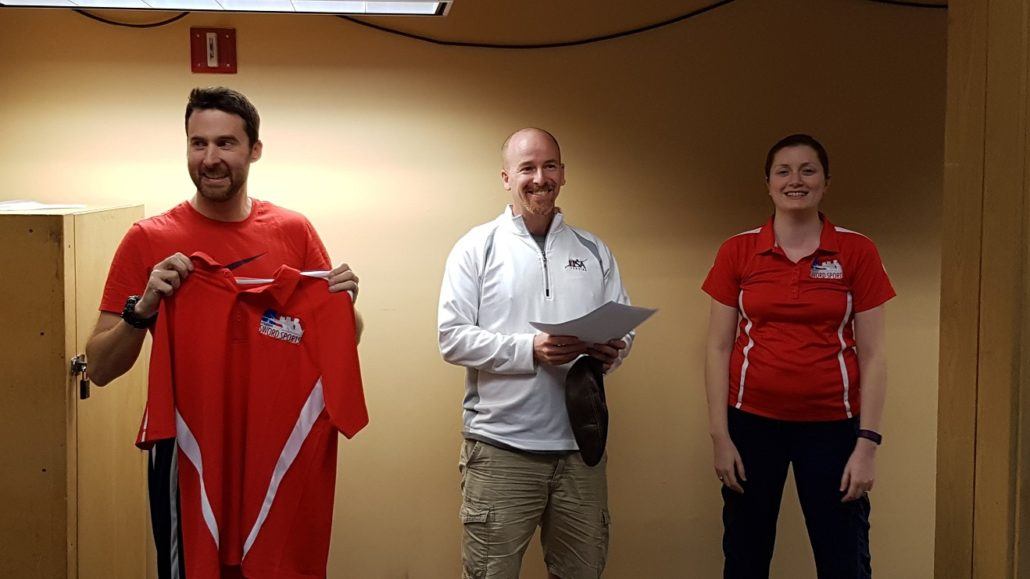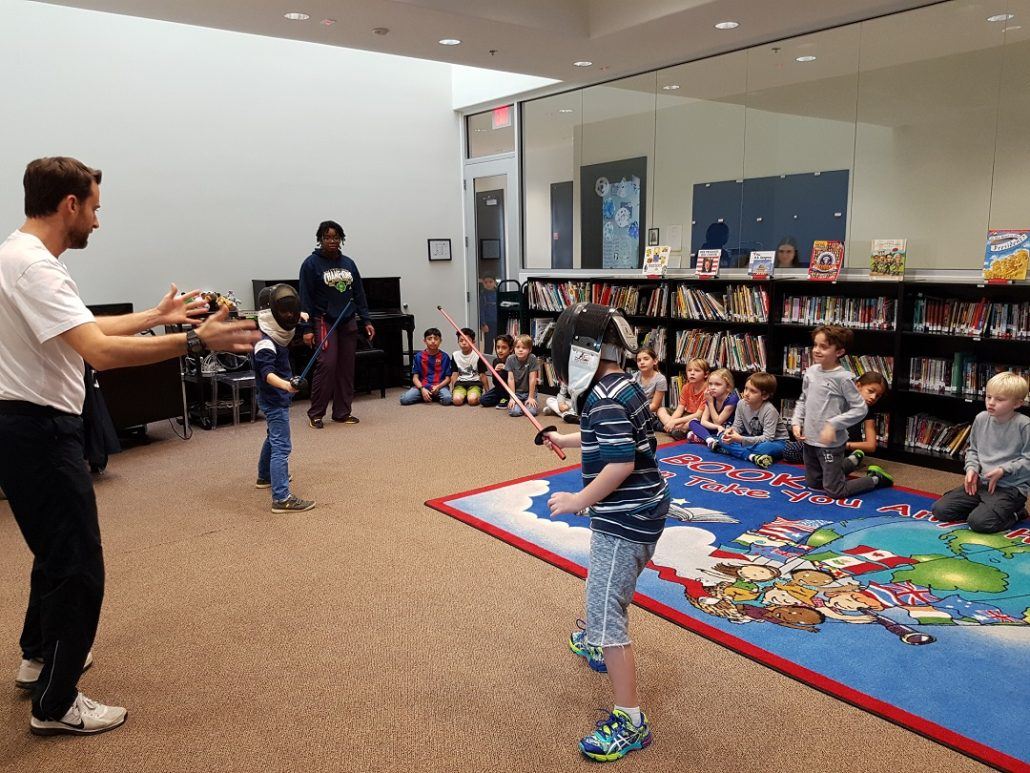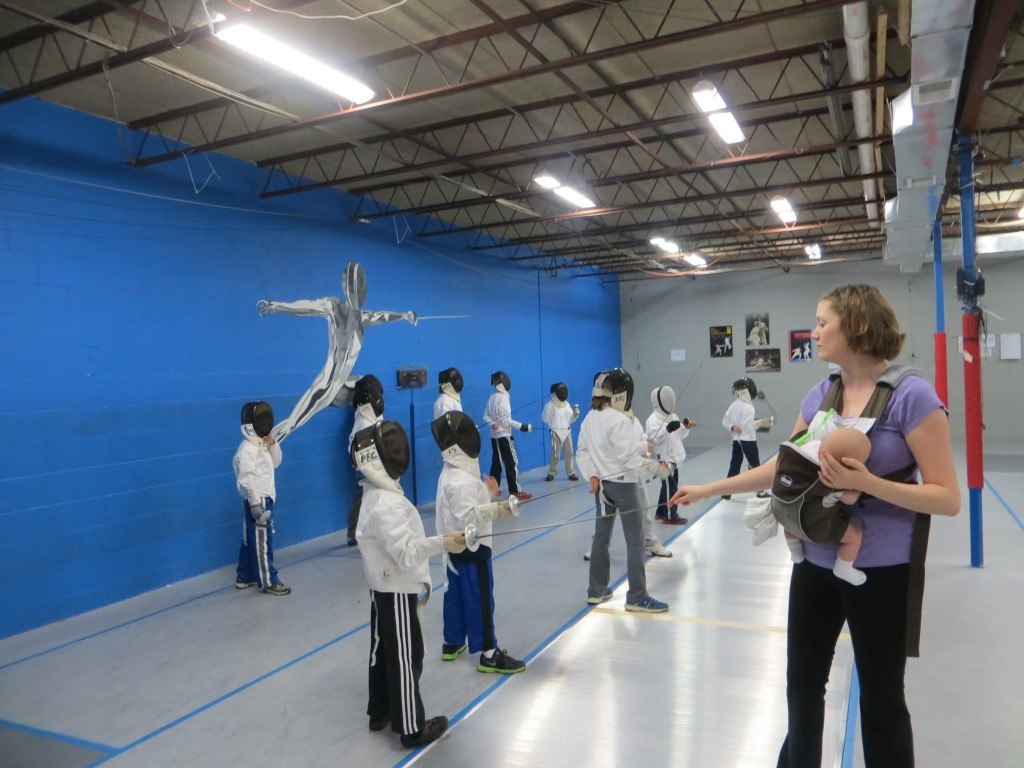Introducing Benoit Bouysset

Coach Benoit holds up his new, official polo shirt.
Last night Houston Sword Sports welcomed a new member to our coaching staff and our ownership team. Benoit Bouysset, French Master (Maitre) and former coach of the US National Men’s Epee team, is now leading classes and giving lessons at Houston Sword Sports!
Benoit’s official title is Chief Development Officer, but his informal title is Chief Epee Officer (which Liz gladly ceded to him). Benoit will be working with us to develop our coach development program, our class curriculum, and our competitive fencing team.
Coach Development: We have always placed a strong emphasis on coach development, and with Benoit on the team we’ll be able to do an even better job. Our goal at Houston Sword Sports is to have a collaborative staff of qualified, knowledgeable coaches working together to build our fencers. We have been holding semi-regular coach training sessions where we discuss our club’s philosophy and approach to coaching. Benoit will take the helm on these sessions now. He’s especially qualified to do this because his Second Level Master of Arms degree emphasized coach development and training. In the next six months, we hope to offer coaching clinics to those outside our club.

Kids at the Kipling School practice squaring off on their first day of classes as Coach Benoit and Coach Caroline look on.
Class Curriculum: We already offer a lot of different programs to a lot of different types of fencers. Some of the afterschool programs are ten weeks and some are eighteen. In some schools, many of the kids have been fencing for over a year; in others, every single student is brand new to fencing. The evening and weekend classes are ongoing, and no two kids have the same level of experience. Coach Benoit will work with the coaching staff to ensure that each class has a curriculum that works for each setting and situation.
Competitive Fencing: This season, we have seen a number of our fencers enter the competitive scene for the first time, and others dedicate themselves to fencing in competitions more. Benoit will help support these fencers in their development. He will also provide more intensive private lessons to those who want to hone their skills one-on-one.
About Coach Benoit
Coach Benoit has an impressive resume. He earned his Master of Arms Degree in 1997 and was the valedictorian of his class; in 1999 he earned his Second Level Master of Arms Degree. He is a three-time world champion fencing master for individual and team epee. From 2011 to 2015 he was a resident coach at the Olympic Training Center in Colorado Springs, CO, and from 2012-2015 he was the US National Coach for Men’s Epee. He also coached Seth Kelsey, the fourth place finisher, at the 2012 London Olympics. His energy and skill make him popular with fencers of all levels and he’s a great addition to our team.

